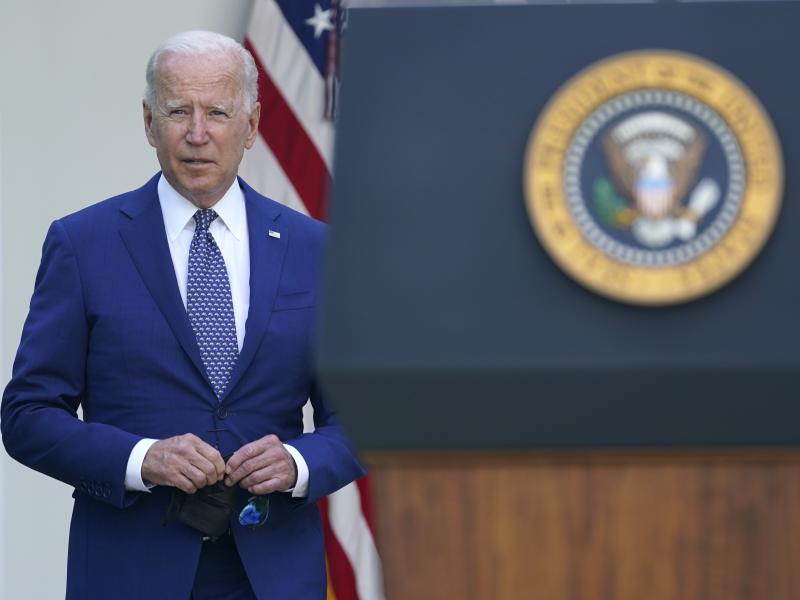
President Biden is having a pretty miserable first summer in office, with challenges coming from all sides: the Delta variant, a record number of illegal crossings at the southern border, and now, of course, the disastrous pull-out from Afghanistan. House Democratic leaders, meanwhile, are struggling to keep their narrow majority united on a plan to pass the Senate’s bipartisan infrastructure bill as well as the outline of Biden’s $3.5T budget package.
But, Biden isn’t the first president to suffer from the first term summer swoon.
The summer of 2017 was a dismal one for President Trump. Obamacare repeal, despite easily passing the House earlier that spring, hit a dead-end in July when three GOP senators voted against the legislation. Soon after came white supremacist rallies in Charlottesville that culminated in the death of a young counter-protester. Trump’s failure to critically condemn the rally-goers led to widespread condemnation. By the end of August, according to the FiveThirtyEight tracker, Trump’s job approval rating sat at a dismal 37 percent.
The summer of 2009 was also a pretty dreary one for President Obama. Healthcare legislation making its way through Congress had become a lightning rod for protests against Democratic members of Congress. Many of these members found their August town-hall events packed with angry constituents. By the end of August, Obama’s job approval had dropped to 50 percent in Gallup polling, the lowest of his presidency and a 14-point drop from where he started the summer.
It’s still too soon to know how Americans are processing the latest news from Afghanistan, but approval ratings for Biden had already been softening over the course of the summer. Between Memorial Day and August 15 (the day before images of desperate Afghans clinging to a US military plane were beamed out to the world), Biden’s net job approval rating had dropped almost 4 points.
In hindsight, it’s easy to see the summer of 2009 and 2017 as precursors to terrible midterm elections for the party in power. Moreover, Biden repeatedly pointed to Trump’s mishandling of Charlottesville as his main motivation for entering the race for president in 2019.
So, does this mean that Biden’s summer slump will lead to a similar fate for his party next year? Or, will he and his party be able to recover in time for the midterms? Trump’s job approval rating in August of 2018 was 42 percent — a five-point improvement from his August ratings a year earlier. For Obama, however, things only got worse after the “townhall summer” of 2009. Obamacare was ultimately signed into law the next year, but Obama’s job approval ratings continued to slide. By the fall of 2010, his job approval ratings were upside down.
In thinking ahead to this time next year, it’s more than possible that the Delta variant no longer poses as serious a threat to public health, and the fate of Afghanistan will no longer dominate news coverage. There’s also a very good chance that Biden’s two big legislative priorities will have been signed into law.
But, we also know that first impressions are sticky. For the first few months of Biden’s tenure, the narrative was one of competence and temperance. COVID vaccines were getting delivered. Cases were dropping. And, Americans were getting more optimistic about the future.
But, despite a strong early start on COVID, Biden’s promise to unite the country around its defeat has flopped. The country is as polarized over the virus as we were in 2020. Just this week, President Biden ordered Education Secretary Miguel Cardona to “take legal action if appropriate” against governors (most of them Republicans) who are preventing local school districts from requiring masking in their classrooms.
But, what about things that Democrats can, theoretically, control like passing their multi-trillion-dollar reconciliation package that would, among other things, expand education, health care and child care support? Polls show that, even knowing the price tag, Americans are broadly supportive of such a concept. But, Republicans are eager to paint this as liberal government overreach, especially in the swing suburban seats that have driven the Democratic party’s success in the last two elections. After conducting multiple focus groups in swing states among GOP-leaning voters who supported Biden in 2020, one strategist told us that Democrats look to be “in big trouble.” Many of these voters who were repelled by Trump’s behavior, said this strategist, are now turned off “by all the spending” that Democrats are proposing.
There’s little doubt that the honeymoon is over for Biden. The question now is if voters are still going to be happy in the marriage come next year.
Image: AP Photo/Susan Walsh

Subscribe Today
Our subscribers have first access to individual race pages for each House, Senate and Governors race, which will include race ratings (each race is rated on a seven-point scale) and a narrative analysis pertaining to that race.